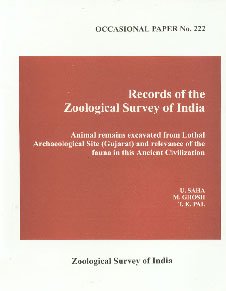Items related to Animal Remains Excavated from Lothal Archaeological...
Animal Remains Excavated from Lothal Archaeological Site (Gujarat) and Relevance of the Fauna to this Ancient Civilization - Softcover
Shipping:
US$ 23.01
From India to U.S.A.
Top Search Results from the AbeBooks Marketplace
Animal Remains Excavated from Lothal Archaeological Site Gujarat and Relevance of the Fauna
Book Description Paperback. Condition: As New. New. Contents 1. Introduction. 2. History of excavation and terminology. 3. Age of the civilization. 4. Systematic account of animal remains. 5. Animal forms recovered from Lothal and their present state of distribution (table). 6. Discussion. 7. Summary. 8. Acknowledgements. 9. References. 10. Index. From the introduction The Indus Valley has been known to be the centre of one of the earliest civilization of the world ever since the discovery of Harappa and Mohenjodaro in 1921 22. Hardly any site of the Indus (Harappa) civilization was discovered within the present day Indian territory at the time of independence and partition of the Indian subcontinent in 1947. The Archaeological Survey of India took up the task of exploring regions east of Indus Valley for finding out Harappan sites. The renewed excavation resulted in the discovery of at least forty Harappan sites in Saurashtra (in Gujarat) the most important among them being Lothal. The word Lothal in Gujarati formed by combining two words Loth and Thal (Sthal) means mound of dead. Interestingly the word Mohenjodaro; in Sindhi carries the same meaning. Lothal lies between two ranns or salt waters namely Rann of Cambay on the south and the little Rann of Kutch on the north with the Nal Lake in the centre. The ancient mound in a flat featureless alluvial lowland was situated on the northern margin of the boundary line separating Saragwala village from Laxmipura and was coming under the revenue jurisdiction of Saragwala administered by the Collectorate of Ahmedabad. 162 pp. Seller Inventory # 50954


